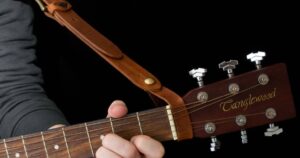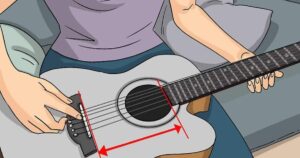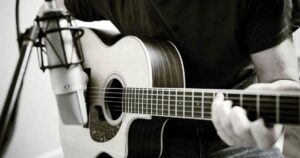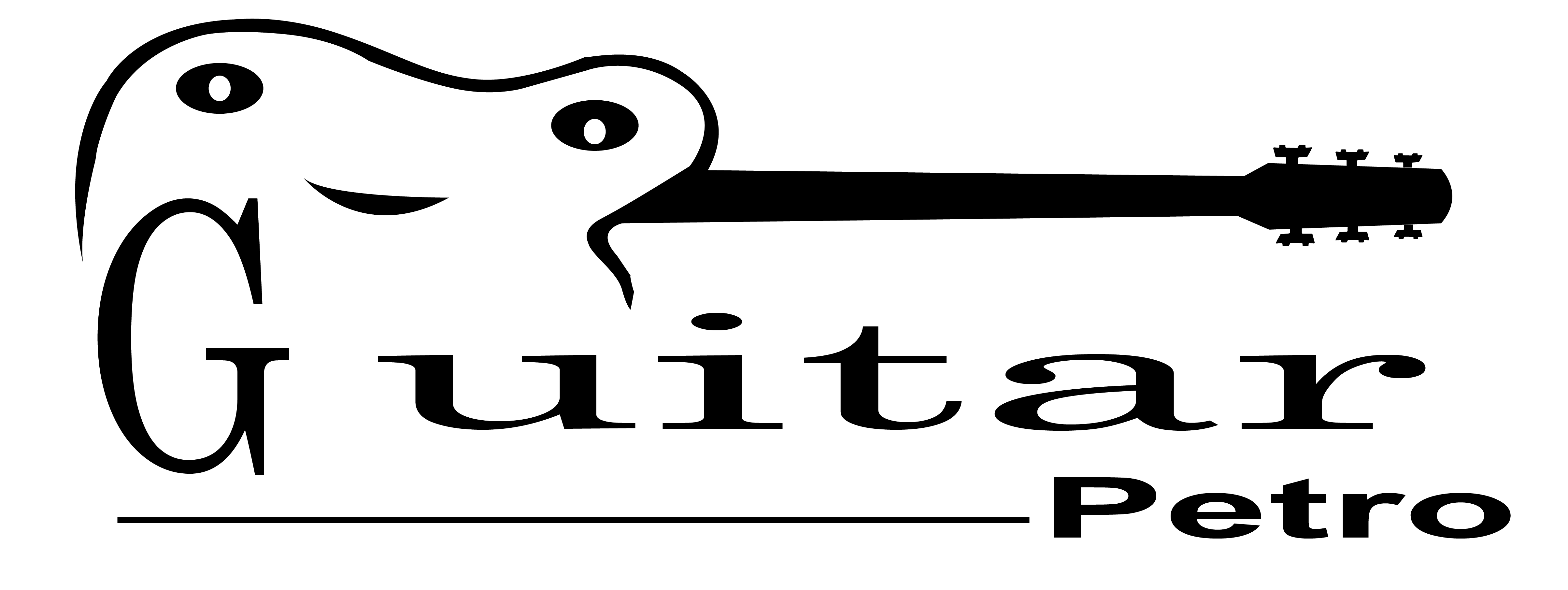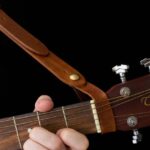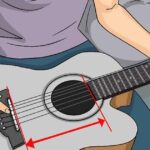Learning How To Play Acoustic Guitar Songs involves acquiring the skills and knowledge needed to strum, fret, and perform songs on an acoustic guitar. It’s a popular and enjoyable hobby that enables individuals to create music and express themselves using this versatile instrument.
Are you ready to unlock the magic of acoustic guitar music? Learning how to play acoustic guitar songs is like discovering a secret world of melody at your fingertips. Whether you’re a beginner or looking to enhance your skills, the journey of making beautiful music with this instrument is both fulfilling and delightful.
Whether you aspire to serenade loved ones, join a campfire jam, or simply enjoy the soothing sound of an acoustic guitar and play acoustic guitar songs, this skill is accessible to anyone willing to put in the effort. It starts with understanding basic chords and strumming techniques, and as you progress, you can tackle more complex songs. So, grab your guitar and embark on a musical adventure that can be both rewarding and entertaining.
Getting Started with Acoustic Guitar
The topic covers basic steps like choosing the right guitar, learning how to tune it, understanding basic chords and strumming patterns, and starting to play simple songs. With the right guidance and practice, you can enjoy making music and gradually progress in your acoustic guitar playing journey.
Choosing the Right Acoustic Guitar
Choosing the Right Acoustic Guitar is about finding the best guitar for you to play acoustic guitar songs. Consider the guitar’s size, your budget, and the sound you like. Smaller guitars suit beginners, while larger ones offer fuller sound. Try various guitars before buying to find the one that feels comfortable and sounds good to you when you’re ready to play acoustic guitar songs.
Basic Components of an Acoustic Guitar
The acoustic guitar has simple parts. The body is where the sound comes from. The neck holds the frets. The headstock holds the tuning pegs. Strings run from the headstock to the body. The soundhole helps create the music. These parts work together to make music when you strum or pluck the strings.
Fundamental Techniques

Fundamental techniques are basic skills for playing the guitar. These include finger placement on the fretboard, strumming or picking the strings, and changing chords. Mastery of these techniques is essential for playing music and progressing in your guitar journey. Practicing regularly helps you build a strong foundation for more advanced guitar skills.
Holding and Tuning the Guitar
Holding the guitar properly means supporting its body against your strumming side while sitting or standing comfortably. Tuning is adjusting the strings to the correct notes using a tuner or reference pitches. Proper holding ensures ease of playing, while tuning ensures the guitar produces the right sound for learning and performing music.
Basic Chords and Fingering
Basic chords, like C, G, and D, are essential for guitar players. Fingering means placing your fingers in the right positions on the fretboard to create these chords. Mastering these chords and their fingering is a crucial step in playing songs on the guitar.
Strumming Patterns
Basic chords, like C, G, and D, are essential for guitar players. Fingering means placing your fingers in the right positions on the fretboard to create these chords. Mastering these chords and their fingering is a crucial step in playing songs on the guitar.
Learning Acoustic Guitar Songs
Learning Acoustic Guitar Songs is about mastering songs on the acoustic guitar. Start with easy songs and gradually progress to more complex ones. Learning the chords and strumming patterns for your chosen songs helps you develop your guitar skills. It’s a fun way to apply what you’ve learned and enjoy making music. With practice and dedication, you can play your favorite songs and even create your own music
Selecting Suitable Songs for Beginners
Selecting suitable songs for beginners is crucial. Look for songs with simple chord progressions and easy strumming patterns. Opt for familiar tunes to stay motivated. Start with songs in your comfort zone, and gradually challenge yourself as you improve. This approach makes learning the acoustic guitar more enjoyable and rewarding for new players.
Breaking Down Song Structures
Breaking Down Song Structures involves understanding how songs are organized. Most songs have a basic structure that consists of different parts:
Verse: This is where the story or message of the song unfolds. It’s often repeated with different lyrics.
Chorus: The chorus is the catchiest part of the song, and its lyrics and melody typically remain the same each time it’s sung.
Bridge: The bridge provides contrast to the verse and chorus. It often introduces a new perspective or element.
Intro and Outro: These are the sections at the beginning and end of the song.
Instrumental Breaks: These sections feature music without lyrics.
The structure of a song can vary, but many follow this basic pattern: Verse – Chorus – Verse – Chorus – Bridge – Chorus – Chorus. This structure helps create a sense of familiarity and progression within the song.
Practicing Chord Transitions
Practicing chord transitions is crucial for guitar learners. Start by switching between basic chords like C, G, and D. Begin slowly, ensuring each finger finds its place smoothly. Gradually increase your speed while maintaining accuracy. This exercise helps you play songs more fluently and enhances your overall guitar skills.
Enhancing Your Skills

Enhancing your skills on the guitar is a journey of constant learning and improvement. Start by setting clear goals for what you want to achieve, whether it’s mastering a new chord, improving your strumming, or learning a challenging song. Consistent practice is key, dedicating time each day to work on your skills.
Additionally, consider taking lessons from experienced instructors or using online tutorials and resources. They can provide valuable guidance and feedback to help you progress faster. Remember, patience and persistence are your allies as you continue to enhance your guitar playing abilities.
Fingerpicking Techniques
- Finger Placement: Position your fingers over specific strings and frets, often using the thumb, index, middle, ring, and pinky fingers.
- Picking Patterns: Learn various picking patterns, like Travis picking, alternating bass, or arpeggios, which dictate the order in which you pluck the strings.
- Finger Coordination: Develop coordination between your fingers to create melodic and rhythmic patterns.
- Hand Position: Maintain the right hand’s position over the soundhole and the left hand’s position on the fretboard.
- Song Selection: Practice fingerpicking with appropriate songs that gradually increase in complexity.
By following this structured approach, you can master fingerpicking techniques and create beautiful melodies on your acoustic guitar.
Understanding Tablature and Notation
Tablature (tab) and notation are ways to read and write music for the guitar. Tabs use numbers to show which frets to press and strings to pluck. Notation uses traditional music symbols. Both methods help you learn and play songs accurately. Understanding both tablature and notation expands your musical versatility on the guitar.
Advanced Strumming Techniques
- Advanced strumming techniques are more intricate and dynamic.
- They involve rhythmic patterns, accents, and strumming direction changes.
- Techniques like palm muting, percussive strumming, and arpeggios add depth.
- Expertise in these techniques enhances your playing style and musical expression.
- They are commonly used in various music genres and can make your guitar playing more versatile.
Resources for Acoustic Guitarists
Resources for Acoustic Guitarists are helpful tools and materials to support your guitar journey. These resources include online tutorials, chord charts, and sheet music. You can find instructional books, videos, and apps to learn and practice. Additionally, joining guitar forums or local music communities can provide valuable guidance and inspiration from experienced players.
Exploring these resources empowers you with knowledge, techniques, and a sense of belonging in the acoustic guitar community, accelerating your progress and musical growth.
Online Tutorials and Courses
Online tutorials and courses are valuable resources for learning guitar. These lessons are available on various websites and platforms. They offer structured guidance, video demonstrations, and interactive exercises, making it convenient to learn at your own pace. Whether you’re a beginner or an advanced player, online resources provide a wealth of knowledge and skills.
Songbooks and Tabs
tabs and Songbooks are valuable resources for acoustic guitarists. Songbooks contain a collection of songs with chords and lyrics, while tabs provide detailed finger positions for playing specific songs. Both resources help you learn and play a variety of songs, expanding your repertoire and enhancing your guitar skills
Practice Routines and Tools
Practice routines and tools are essential for guitarists’ skill development. Create a structured practice plan that includes scales, chords, and songs. Utilize metronomes and tuners to improve timing and pitch. These routines and tools help you progress and refine your acoustic guitar skills, ultimately enhancing your musical abilities.
Troubleshooting and Practice Tips

When facing challenges in playing the acoustic guitar, troubleshooting can help. Check for proper tuning and finger placement. If a chord sounds off, review your finger positioning. Also, ensure your guitar is in good condition, with no loose strings or damaged frets.
Practice tips include consistent daily practice, starting slowly, and gradually increasing speed. Focus on difficult sections and break them into smaller parts. Don’t forget to take breaks to prevent frustration and maintain motivation during practice sessions.
Overcoming Common Challenges
Learning acoustic guitar presents common challenges like finger discomfort, difficulty in changing chords, and staying motivated. To overcome discomfort, take breaks and build finger strength gradually. Practice regularly to ease chord transitions. Stay motivated by setting achievable goals and enjoying the learning process, seeking inspiration from your favorite music.
Developing Consistent Practice Habits
Developing consistent practice habits is crucial for mastering the guitar. Set aside regular, dedicated time for practice each day or week. Start with short sessions and gradually increase the duration. Use a practice schedule to focus on various skills, like chords, scales, and songs. Consistency is key to becoming a proficient guitarist.
FAQ’s
How do I start playing acoustic guitar songs?
Begin with easy songs, learn basic chords, and practice strumming. Start slow and gradually work your way up to more challenging tunes.
Can I learn acoustic guitar songs if I’m a beginner?
Yes, beginners can learn acoustic guitar songs. Start with simple songs and follow step-by-step tutorials or lessons.
How can I improve my guitar playing skills?
Regular practice, patience, and using online tutorials or lessons can help you enhance your acoustic guitar song-playing skills.
Conclusion
Learning how to play acoustic guitar songs is an achievable and rewarding journey for beginners and aspiring musicians. Starting with simple songs and gradually progressing to more complex tunes allows you to build a strong foundation in playing the acoustic guitar. Through regular practice, dedication, and the support of online tutorials and lessons, you can enhance your guitar skills and expand your repertoire.
Remember that patience is key, and every small step taken in your guitar-playing adventure brings you closer to your musical goals. Whether you’re strumming for personal enjoyment or aiming to perform for others, the joy of creating music on your acoustic guitar is a fulfilling and lifelong pursuit. So, keep practicing, stay inspired by your favorite songs, and enjoy the beautiful sounds you can create with this versatile instrument.


